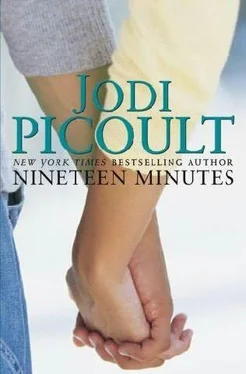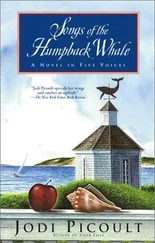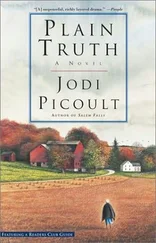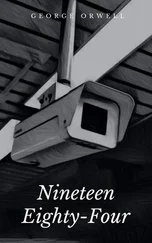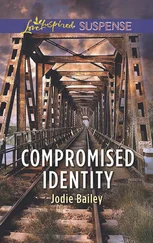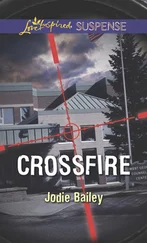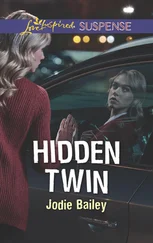The recording was grainy, but still intelligible. In the upper right-hand corner were the lunch ladies, slopping food onto plastic trays as students came through the line one by one, like drops through an intravenous tube. There were tables full of students-Patrick’s eye gravitated toward a central one, where Josie was sitting with her boyfriend.
He was eating her French fries.
From the left-hand door, a boy entered. He was wearing a blue knapsack, and although you could not see his face, he had the same slight build and stoop to his shoulders that someone who knew Peter Houghton would recognize. He dipped beneath the range of the camera. A shot rang out as a girl slumped backward off one of the cafeteria chairs, a bloodstain flowering on her white shirt.
Someone screamed, and then everyone was yelling, and there were more shots. Peter reappeared on camera, holding a gun. Students started stampeding, hiding underneath the tables. The soda machine, freckled with bullets, fizzed and sprayed all over the floor. Some students crumpled where they were shot, others who were wounded tried to crawl away. One girl who’d fallen was trampled by the rest of the students and finally lay still. When the only people left in the cafeteria were either dead or wounded, Peter turned in a circle. He moved down an aisle, pausing here and there. He walked up to the table beside Josie’s and put his gun down. He opened an untouched box of cereal still on a cafeteria tray, poured the cereal into a plastic bowl, and added milk from a carton. He swallowed five spoonfuls before he stopped eating, took a new clip out of his backpack, loaded it into his gun, and left the cafeteria.
Diana reached beneath the defense table and pulled out a small plastic bag and handed it to Patrick. “Do you recognize this, Detective Ducharme?”
The Rice Krispies box. “Yes.”
“Where did you find it?”
“In the cafeteria,” he said. “Sitting on the same table you just saw in the video.”
Patrick let himself look at Alex, sitting in the gallery. Until now, he couldn’t-he didn’t think he’d be able to do his job well, if he was worrying about how this information and level of detail were affecting her. Now, glancing at her, he could see how pale she’d gotten, how stiff she was in her chair. It took all of his self-control not to walk away from Diana, hop the bar, and kneel down beside her. It’s all right, he wanted to say. It’s almost over.
“Detective,” Diana said, “when you cornered the defendant in the locker room, what was he holding?”
“A handgun.”
“Did you see any other weapons around him?”
“Yes, a second handgun, around ten feet away.”
Diana lifted up a picture that had been enlarged. “Do you recognize this?”
“It’s the locker room where Peter Houghton was apprehended.” He pointed to a gun on the floor near the lockers, and then another a short distance away. “This is the weapon he dropped, Gun A,” Patrick said, “and this one, Gun B, is the other one that was on the floor.”
About ten feet past that, on the same linear path, was the body of Matt Royston. A wide pool of blood spread beneath his hip, and the top half of his head was missing.
There were gasps from the jury, but Patrick wasn’t paying attention. He was staring right at Alex, who was not looking at Matt’s body but at the spot beside it-a streak of blood from Josie’s forehead, where she had been found.
Life was a series of ifs-a very different outcome if you’d only played the lottery last night; if you had picked a different college; if you had invested in stocks instead of bonds; if you had not been taking your kindergartner to his first day of school the morning of 9/11. If just one teacher had stopped a kid, once, from tormenting Peter in the hall. If Peter had put the gun in his mouth, instead of pointing it at someone else. If Josie had been standing in front of Matt, she might have been the one buried in the cemetery. If Patrick had been a second later, she still might have been shot. If he hadn’t been the detective on this case, he would not have met Alex.
“Detective, did you collect these weapons?”
“Yes.”
“Were they tested for fingerprints?”
“Yes, by the state crime lab.”
“Did the lab find any fingerprints of value on Gun A?”
“Yes, one, on the grip.”
“Where did they obtain the fingerprints of Peter Houghton?”
“From the station, when we booked him.”
He walked the jury through the mechanics of fingerprint testing-the comparison of ten loci, the similarity in ridges and whorls, the computer program that verified the prints as a match.
“Did the lab compare the fingerprint on Gun A to any other person’s fingerprints?” Diana asked.
“Yes, Matt Royston’s. They were obtained from his body.”
“When the lab collected the print off the gun’s grip and compared it to Matt Royston’s fingerprints, were they able to determine whether or not there was a match?”
“There was no match.”
“And when the lab compared it to Peter Houghton’s fingerprints, were they able to determine whether or not there was a match?”
“Yes,” Patrick said. “There was.”
Diana nodded. “What about on Gun B? Any prints?”
“Just a partial one, on the trigger. Nothing of value.”
“What does that mean, exactly?”
Patrick turned to the jury. “A print of value in fingerprint typing is one that can be compared to another known print and either excluded or included as a match to that print. People leave fingerprints on items they touch all the time, but not necessarily ones we can use. They might be smudged or too incomplete to be considered forensically valuable.”
“So, Detective, you don’t know for a fact who left the fingerprint on Gun B.”
“No.”
“But it could have been Peter Houghton?”
“Yes.”
“Do you have any evidence that anyone else at Sterling High School was carrying a weapon that day?”
“No.”
“How many weapons were eventually found in the locker room?”
“Four,” Patrick said. “One handgun with the defendant, one on the floor, and two sawed-off shotguns in a knapsack.”
“In addition to processing the weapons found in the locker room for fingerprints, did the lab do any other forensic testing on them?”
“Yes, a ballistics test.”
“Can you explain that?”
“Well,” Patrick said, “you shoot the gun into water, basically. Every bullet that comes out of a gun has markings on it that are put in place when a bullet twists its way through the barrel of the gun. That means you can type each bullet to a gun that has been fired by test-firing a gun to see what a bullet would look like once fired from it, and then matching up bullets that have been retrieved. You can also tell whether a gun has ever been fired at all by examining residue within the barrel.”
“Did you test all four weapons?”
“Yes.”
“And what were the results of your tests?”
“Only two of the four guns were actually fired,” Patrick said. “The handguns, A and B. Of the bullets that we found, all were determined to have come from Gun A. Gun B, when we retrieved it, had been jammed with a double feed. That means two bullets had entered the chamber at the same time, which keeps the gun from properly functioning. When the trigger was pulled, it locked up.”
“But you said Gun B was fired.”
“At least once.” Patrick looked up at Diana. “The bullet has not been recovered to date.”
Diana Leven led Patrick meticulously through the discovery of ten dead students and nineteen wounded ones. He started with the moment that he walked out of Sterling High with Josie Cormier in his arms and placed her in an ambulance, and ended with the last body being moved to the medical examiner’s morgue; then the judge adjourned court for the day.
Читать дальше
